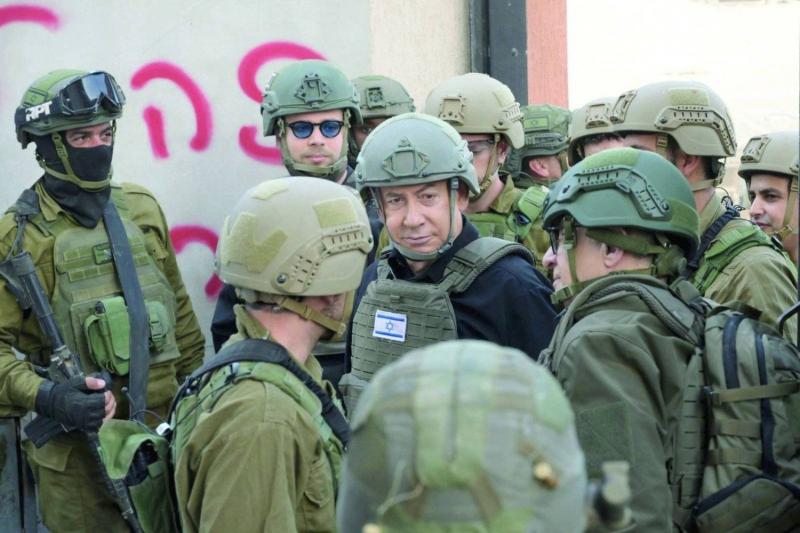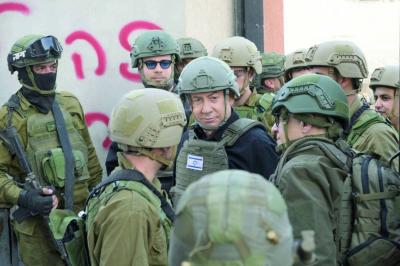The Middle East, or as someone once referred to it as "the area of the deep rift," has been inherently marked by conflicts and wars entwined within its geological and human formation. Since prehistoric times, bloodshed from swords and arrows, driven by ethnic and religious motives, has never left this region. The dream of empires is never complete without imposing their presence in the Mediterranean, their land, rivers, and extending into the Sahara desert. At the dawn of the twentieth century, major political maps shifted; global powers faded, and new ones were born. A volatile phenomenon emerged, complicating the geography and humanity of the region further. The birth of the State of Israel addressed a chronic problem for Europe—the Jewish issue. The Arab-Israeli war ignited immediately following the declaration of the Hebrew state, with Arabs losing their first battles against this new entity that emerged amidst them. The land of Palestine has a unique distinction where religion and history intertwine. Judaism, Christianity, and Islam have roots and branches in this sacred land for all. The Crusades, in which Muslims and Western Christians fought for many years, were a pivotal moment in the history of the region and the world. In both World Wars, this area paid dues that shaped the new political maps forged by conflict. Palestine, representing the sacred stones in the mountains of history and religion for Arabs and Muslims, was left without a share of the political entities birthed by the wars of the twentieth century. Arab states were born in Asia and Africa, but the land of Palestine had a different fate, seeing the establishment of the State of Israel upon it.
During the era of Arab nationalism led by the late Egyptian President Gamal Abdel Nasser and nationalist party organizations—the "Ba'ath" and "Arab Nationalists"—Palestine became the political and intellectual spark that ignited discourse and stirred the emotions of the Arab masses. Following the defeat in June 1967 and Israel's occupation of Gaza, the West Bank, and Sinai, the fire of Arab nationalism dimmed and was extinguished with the departure of President Nasser. In a vast human and geographic space with shared religious, cultural, and historical ties, the masses crave an inspiring glimmer that stirs emotions and ignites the regions of hope—after all, there is no fire without fuel.
In 1979, the Iranian Revolution erupted in the region, raising slogans against colonialism and American imperialism, donning an Islamic religious garb, and led by the cleric Ayatollah Ruhollah Khomeini. The revolution triumphed, ending the Shah's regime. This significant event shook the world, eliciting varied reactions. The emergence of religious leaders, cloaked in their robes and turbans, caught the attention of both nearby and distant Muslim audiences. Initially, the Iranian Islamic Revolution did not reveal its sectarian Shiite political doctrine and resonated with support for the Palestinian cause, handing over the Israeli embassy in Tehran to the Palestine Liberation Organization. The Palestinian cause became the beacon raised by anyone seeking a leadership project and hoping to build a regional vital space that transcends national borders. The Iranian clerics established their project on sectarian extensions within the region. The national project, specifically the Nasserist one, which crossed Egyptian borders, did not establish armed militias in the Arab countries that had supportive popular cells. The Islamic Republic of Iran early on opened the doors of its religious seminaries to the Shiite community in some Arab countries, forming armed militias in their homelands, supported by significant military and financial backing.
The liberation of historical Palestine and the uprooting of the Israeli entity became the unwavering mobilizational voice in Iran. Resistance and defiance transformed into a political, military, and jurisprudential map, with its threads in Tehran's hands. Iran leveraged all its financial and scientific capabilities into a comprehensive military project, cementing its military and political presence in Lebanon, Syria, Yemen, and Iraq. The terrifying firestorm that shook the Hebrew entity was the dangerous Iranian project, which approaches the achievement of nuclear weaponry daily. Long-range missiles with varying explosive capabilities, drones evading Israeli Iron Domes, and the military capabilities of Iranian arms in countries aligned with Iran have made Iran Israel's largest strategic target.
In recent days, Israel carried out two devastating strikes against the status and position of Iran: the assassination of Fouad Shukr, a top military leader of Hezbollah, in the heart of southern Beirut, and the assassination of Ismail Haniyeh, the head of Hamas, in the heart of Tehran. Iranian leaders quickly raised voices of threats, echoed by attacks from Ansar Allah in Yemen and Hezbollah in Lebanon against various areas within Israeli territories. Israel is in a state of total mobilization, with American and Western military support reaching its peak, while Russia has aligned with Iran, providing it with weapons and political support, dispatching National Security Council Secretary General Shoigu to Tehran.
War is undoubtedly coming; Netanyahu is sprinting towards it, with his primary strategic goal being the destruction of the Iranian nuclear project. However, Iran has its own timeline. As Hassan Nasrallah said: Iranians are being slaughtered with cotton.




